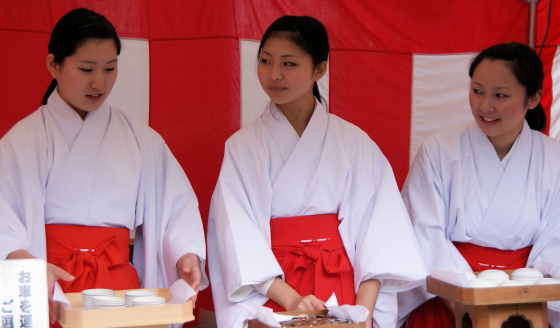Hatsumode is the Japanese custom of the first visit of the new year to a shrine or temple.
We were up in Kyoto visiting Yoko's family, and our first visit was to Nagaoka Tenmangu, a big, and therefore popular shrine.
It was late afternoon, and still the line waiting to get to the shrine was over 400 meters long.
Most of the bigger shrines will hire many temporary miko to help out over the new year period. For these shrines Hatsumode supplies the biggest chunk of their annual income.
Next we headed to Hashirita Shrine, the local shrine for my sister-in-law's family, nestled on the hillside above Nagaoka. It was a far more intimate and friendly affair.
Every small altar within the grounds had their own offerings.
Around the other side of the hill a small, unmanned Inari Shrine.
We walked further along the edge of the bamboo forest and as dusk settled visited Komorikate Shrine where I was able to chat with 2 older gentlemen from the shrines ujiko (parish group) about the history of the shrine that was moved here from Nara when Nagaoka was the capital of Japan.
Each year a local man makes a sculpture out of bamboo of the new years animal. Behind this years rabbit you can see last years tiger and 2009's boar.






























